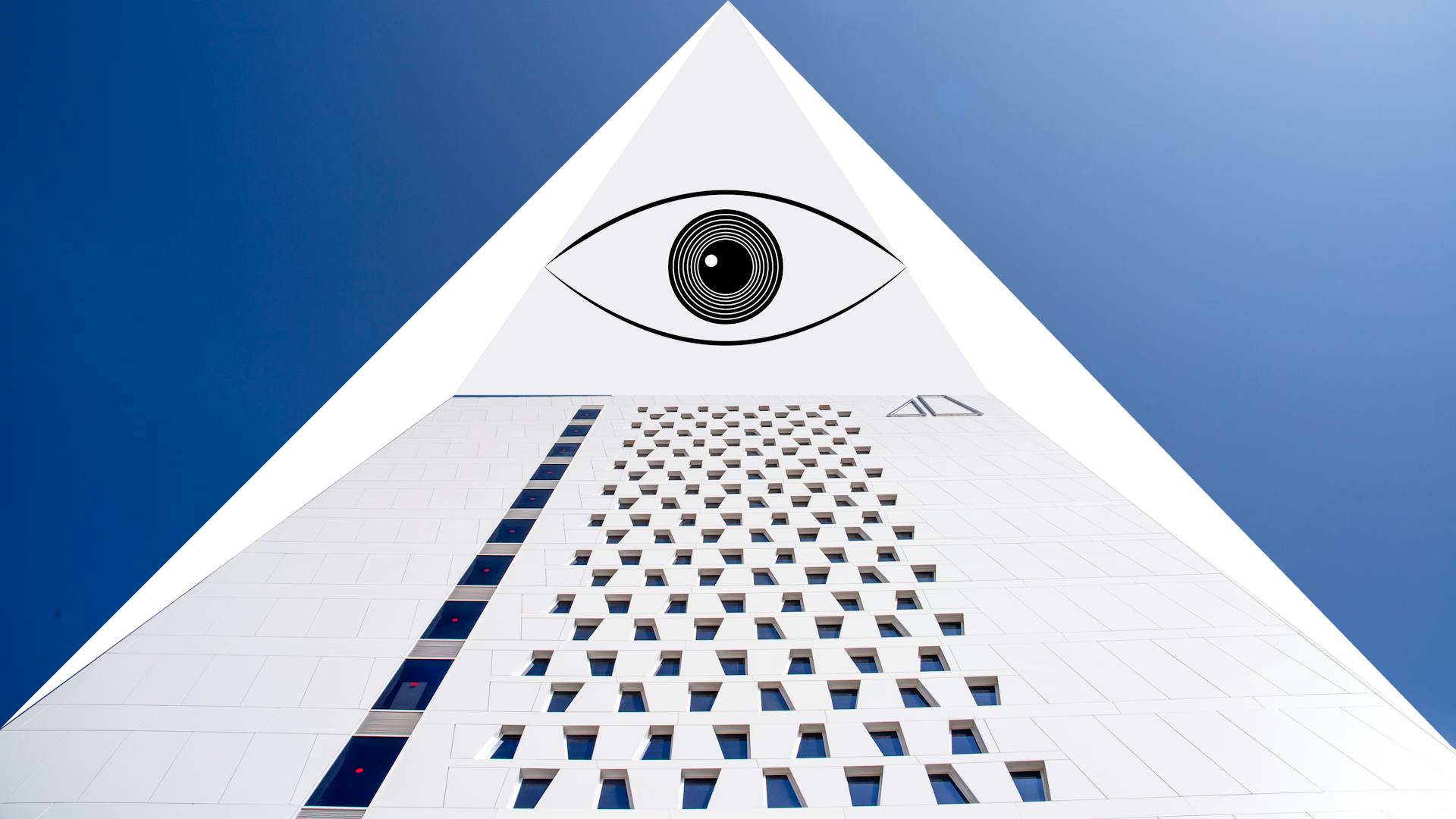
Shih Tzu eye ulcers are a serious concern for dog owners. They can be caused by a scratched cornea or a foreign object in the eye.
A scratched cornea is the most common cause of eye ulcers in Shih Tzus. This can happen when the dog rubs its eye on a rough surface or gets poked in the eye by a sharp object.
Eye ulcers can be painful and may cause redness, discharge, and squinting. If left untreated, they can lead to complications such as vision loss.
In severe cases, eye ulcers can even cause the cornea to perforate, which is a medical emergency.
You might like: Types of Dog Eye Infections
Causes and Types
Physical trauma is a common cause of dog corneal ulcers, including in Shih Tzus. It can be anything that causes bodily injury to your dog, resulting in damage to the eyes.
Blunt force trauma occurs when something hard or rigid comes into contact with the eyes, causing damage. This can happen when your dog collides with a hard object, like a wall or a chair.
Penetrating trauma is characterized by open wounds in and around the eyes, often caused by a scratch or nick from a foreign body.
For more insights, see: Shih Tzu Eyes Pop Out
Chemical Irritation

Chemical irritation is a common cause of dog corneal ulcers. It can be attributed to harsh chemicals or substances that get trapped in your dog's eyes.
Nail polish remover and drywall dust are just two examples of chemicals that can cause irritation. They can produce a burning effect that leads to lesions or abrasions on the cornea.
Some household cleaners, such as glass polish and oven cleaners, can also trigger chemical irritation. These substances can be just as damaging as nail polish remover and drywall dust.
Bleach and ammonia are two other chemicals that can cause irritation. They can be found in various household products, including deep-cleaning detergents.
Using dog-specific soaps and shampoos is a great way to avoid chemical irritation. This is especially important for your dog's hygiene products.
For another approach, see: Shih Tzu Small Dogs
Physical Trauma
Physical trauma is a common cause of dog corneal ulcers. Deemed as the most common cause, it can be anything that causes bodily injury to your canine family member, resulting in damage to the eyes, particularly the cornea.

Two types of physical trauma can set off corneal ulcers in dogs: blunt force trauma and penetrating trauma. Blunt force trauma occurs when something hard or rigid forcibly comes in contact with the eyes, such as when your dog collides with a wooden chair or a wall.
Penetrating trauma is characterized by the piercing of the skin, muscles, and tissues in and around the area of the eyes, resulting in open wounds. A common example of this is a scratch or nick in your dog's eye by a foreign body.
Superficial corneal ulcers can also be triggered by physical trauma to the eye by typically harmless objects like small pebbles or loose, tiny pieces of tree bark.
For another approach, see: Red Eyes in German Shepherds
Infections
Infections can be a serious concern for dogs, often caused by bacteria, viruses, or parasites that can lead to inflammation and swelling.
Ehrlichiosis or tick fever is one example of an infection that can affect a dog's eyes, causing corneal ulcers.

Lyme disease is another example, which can also lead to corneal ulcers in dogs.
Conjunctivitis, also known as pink eye, can cause redness, discharge, and swelling in a dog's eyes.
Canine influenza is a highly contagious infection that can cause a range of symptoms, including eye problems.
Leptospirosis is a bacterial infection that can also cause eye problems in dogs, including conjunctivitis and corneal ulcers.
Suggestion: Shih Tzu Behavior Problems
Types
There are several types of causes that can lead to a particular issue or problem.
The main types are internal, external, and systemic causes.
Internal causes arise from within an individual or organization, such as a lack of motivation or inadequate training.
External causes come from outside an individual or organization, such as changes in the market or government regulations.
Systemic causes involve the underlying systems and processes that govern an individual or organization, such as outdated policies or inefficient procedures.
A unique perspective: Shih Tzu Different Types
Simple Superficial
Simple superficial ulcers are relatively minor and only affect the outer layer of the cornea, known as the epithelium. They should heal in 5 to 7 days without treatment, as long as no complications arise.

Within an hour of injury, the epithelial cells start to migrate to the damaged area and form a new layer of cells. This process happens in a "leapfrog" fashion, where new cells slide over the old ones.
The new epithelium is loosely attached, so an Elizabethan collar (E-collar) is recommended to protect the eye until the ulcer is fully healed. This is crucial to prevent further irritation and promote healing.
Keep an eye out for signs of increased discomfort, such as squinting, and watch for color changes in the cornea and conjunctiva. These can include increased redness, a blue tint, haziness, yellowness, or a yellow/green discharge.
The patient should start to feel more comfortable over the course of the week, and antibiotics should be continued until the cornea is completely healed. This is typically indicated by a negative stain test.
Abnormalities
Abnormalities play a significant role in canine corneal ulcers.
Qualitative and quantitative tear deficiencies can both contribute to these ulcers.

Dogs with corneal ulcers should have a Schirmer tear test performed, unless the ulcer is deep or the dog has significant epiphora.
A normal Schirmer tear test result is 15 mm or greater in 1 minute, while less than 15 mm/min could indicate "dry eye".
Corneal ulcers in dogs with KCS can become serious quickly due to the lack of tears and poor corneal health.
Dogs with chronic KCS are more resistant to ulceration because the cornea becomes toughened by long-term changes like pigment and fibrosis.
Mucin deficiency is a form of qualitative tear deficiency that allows the tears to evaporate more quickly, leading to drying of the cornea.
For another approach, see: Shih Tzu Hypoallergenic Dogs
Symptoms and Diagnosis
Symptoms of a Shih Tzu eye ulcer can be subtle at first, but as the condition worsens, they become more apparent. The symptoms range from mild to severe and include unexplained hiding, lack of interest in play, and excessive whining and groaning.
As the ulcer progresses, you may notice your Shih Tzu pawing at the affected eye, excessive blinking, and rubbing of the face on hard surfaces. These behaviors are the dog's way of trying to alleviate the discomfort caused by the ulcer.
Visible corneal defects, redness, swelling, and discharge are also common symptoms of a Shih Tzu eye ulcer. If you notice any of these symptoms, it's essential to seek veterinary attention immediately.
Signs of Canine Tissue Damage
If you notice your dog is hiding or showing a lack of interest in play, it could be a sign of corneal tissue damage. This is often the case with uncomplicated ulcers.
Excessive whining and groaning are also common symptoms. Your dog may be trying to tell you something is wrong.
Visible corneal defects like lesions are a clear indication of corneal tissue damage. This can be a sign of a more serious issue.
Excessive blinking, rubbing of the face on hard surfaces, and redness in the distressed eye are all potential signs of corneal tissue damage. Your dog may be trying to alleviate discomfort.
Constant tearing, either in the affected eye or both eyes, is another symptom to watch out for. This can be a sign of an underlying issue.
Here are the symptoms of corneal ulcer in dogs, listed from the slightest to the most severe:
- Unexplained hiding
- Lack of interest in play
- Excessive whining and groaning
- Constant pawing at the affected eye
- Visible corneal defects like lesions
- Excessive blinking
- Rubbing of the face on hard surfaces
- Redness in the distressed eye
- Constant tearing either only in the affected eye or both eyes
- Loss of appetite
- Keeping the affected eye closed most of the time
- Discharge coming from the affected eye (possibly bloody)
If you notice any of these symptoms, it's essential to administer immediate and proper care to prevent aggravating the issue.
How Are Diagnosed?
A thorough eye exam is crucial to diagnose eye conditions that cause discomfort in pets. Your veterinarian will evaluate each part of your pet's eye to reach an accurate diagnosis.
A fluorescein stain is often applied to the cornea during the exam. The stain only adheres to damaged areas where the epithelium has been lost and the underlying stroma is exposed.
Positive stain uptake is diagnostic for the severity of a corneal ulcer, which is a serious condition that requires prompt treatment.
Treatment and Care
A warm compress can be a helpful treatment for soothing your Shih Tzu's eye ulcer. Submerge a clean cloth in warm water, wring it out, and gently place it on the affected eye for at least five minutes.
Using a warm compress can help prevent the ulcer from becoming worse, especially if it's caused by inflammation of the eyelids or corneal inflammation. This is because warm compresses have a beneficial effect on eye health issues like blepharitis.
You can also use honey as a natural remedy to help give your pet pain relief from a dog's eye ulcer. To use honey, boil a cup of water with three teaspoons of honey and let it cool down completely before applying it to your dog's diseased eye as irrigation or a natural eyewash. Honey has antibacterial properties that can help prevent corneal scarring caused by infection.
Your veterinarian may prescribe a combination of medications to help your Shih Tzu's eye ulcer heal properly, including topical antibiotics, topical atropine, oral pain medications, corneal repair gel, and tear stimulants. By following your veterinarian's complete treatment plan, you can provide your pet with the best chance of successful healing.
Pet Health Care
A warm compress can be a great home remedy for soothing a dog's eye ulcer, helping to reduce inflammation and prevent it from becoming worse.
You can make a warm compress by submerging a clean piece of cloth or small towel in warm water and wring out the excess. Gently place the compress on the diseased eye and keep it in place for at least five minutes.
Saline solution is another simple and effective way to clean and soothe a dog's eye ulcer. To make your own saline solution, combine a cup of pre-boiled water with a teaspoon of non-iodized salt, such as kosher salt or pickling salt.
However, it's essential to avoid using sea salt, as its minerals can irritate the eye further. Stir the mixture thoroughly until the salt crystals dissolve, then let it cool completely before applying it to your dog's eye as irrigation.
Cleaning your dog's eye during a corneal ulcer requires some care and attention to detail. To do it properly, you'll need two clean pieces of cloth, two deep containers or bowls, an eyedropper or syringe, and a saline solution.
Start by placing your dog in a comfortable position, then gently wipe the areas around the eyes with a damp cloth to remove any crust, dirt, or fur. Use the eyedropper or syringe to irrigate the surface of the diseased eye, taking care not to touch it directly.
Honey can also be a helpful natural remedy for soothing a dog's eye ulcer. To use honey, boil a cup of water with three teaspoons of honey, then let the mixture cool down completely. Apply it to your dog's eye as irrigation or as a natural eyewash.
It's essential to follow your veterinarian's complete treatment plan to ensure your dog's eye ulcer heals properly. This may include a combination of medications, such as topical antibiotics, atropine, oral pain medications, and corneal repair gel.
Grafts
Corneal ulcers can be treated with corneal grafts, which are a type of surgery where a healthy cornea is transplanted onto the affected area.
There are different types of corneal grafts available, including full-thickness grafts, where the entire thickness of the cornea is replaced.
A full-thickness graft is often used to treat deep corneal ulcers, as it provides the best chance of a successful outcome.
Grafts can be taken from a donor or from the patient's own eye, which is known as an autograft.
Corneal ulcers can be a serious condition, but with the right treatment, including corneal grafts, patients can experience significant improvements in their vision and quality of life.
Frequently Asked Questions
How do you treat an ulcer in a dog's eye?
To treat a dog's eye ulcer, your veterinarian may prescribe topical antibiotics to kill bacteria and promote healing. This treatment helps clear the way for the cornea to heal properly.
What does a dogs eye look like with an ulcer?
A dog's eye with an ulcer may appear red, sore, and cloudy, with visible indentations or holes on the surface
How much is eye ulcer surgery for dogs?
The cost of eye ulcer surgery for dogs can range from $200 to $2,000, depending on the procedure and additional care needed. Learn more about the factors that affect the price and what to expect during the recovery process.
Can a dog recover from a corneal ulcer?
Yes, most dogs can recover from a corneal ulcer, but in some cases, the ulcer fails to heal and may lead to a more serious condition. If you're concerned about your dog's corneal ulcer, it's essential to seek veterinary attention to determine the best course of treatment.
How do I know if my dog's eye ulcer is healing?
Your veterinarian will monitor your dog's eye ulcer by performing fluorescein stain tests and measuring its size. Healing is indicated by reduced redness, swelling, and tearing
Sources
- https://www.zumalka.com/blogs/blog-pet-health/corneal-ulcer-in-dogs-natural-home-remedies
- https://todaysveterinarypractice.com/pet-owner-resources/sentrx-corneal-ulcers-handout/
- https://metro-vet.com/symptoms-diagnosis-and-treatment-of-corneal-ulcers-in-pets/
- https://www.vetspecialists.co.uk/fact-sheets-post/non-healing-indolent-corneal-ulcers-in-dogs-fact-sheet/
- https://todaysveterinarynurse.com/ophthalmology/managing-canine-corneal-ulcers/
Featured Images: pexels.com


